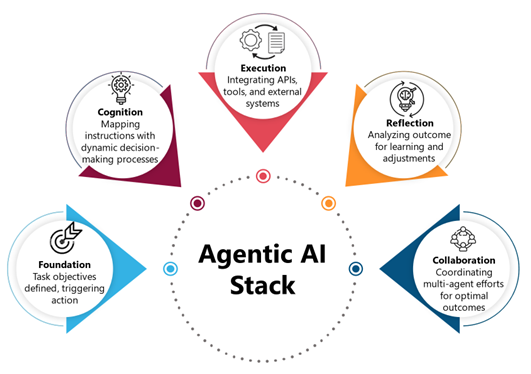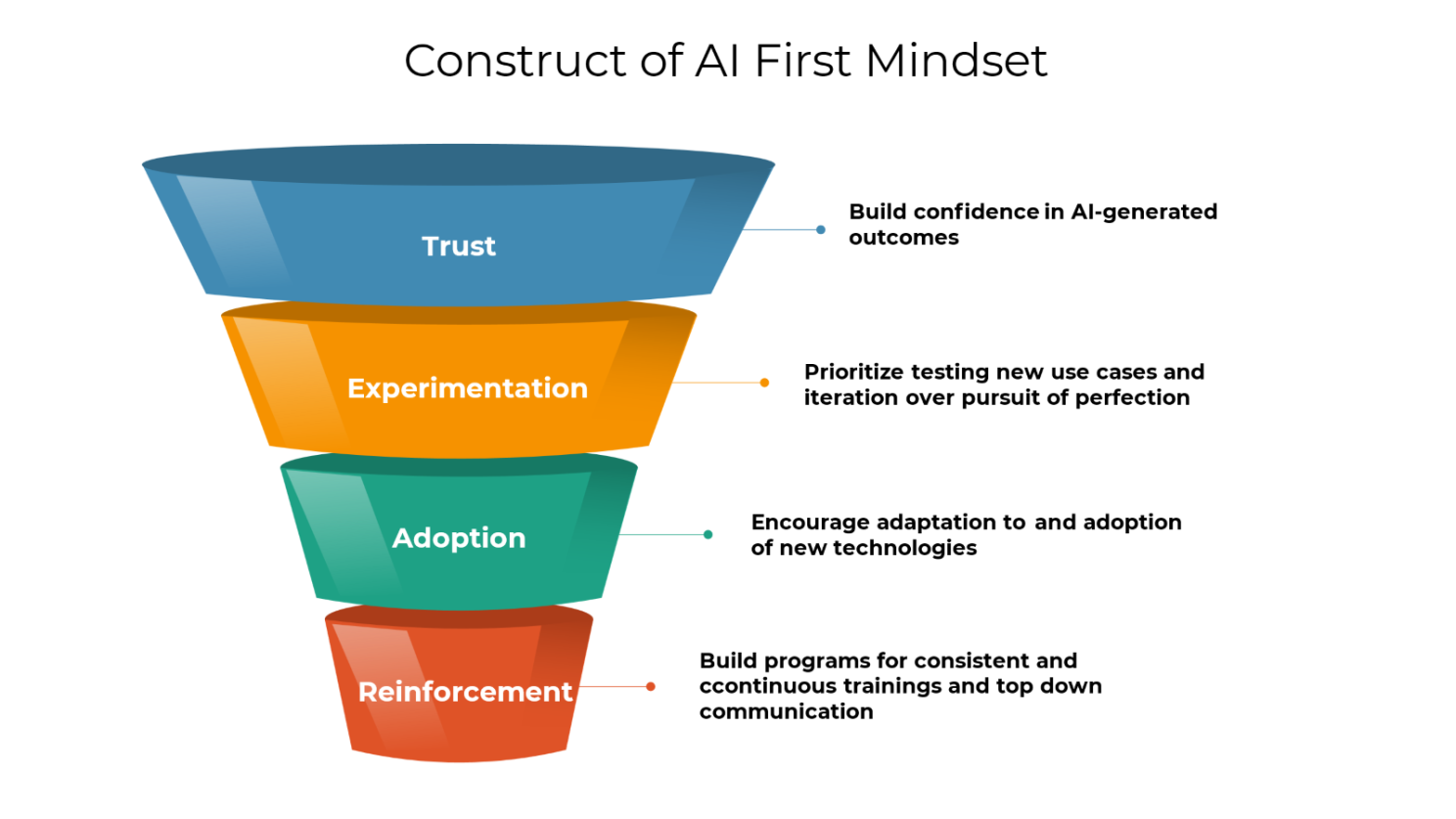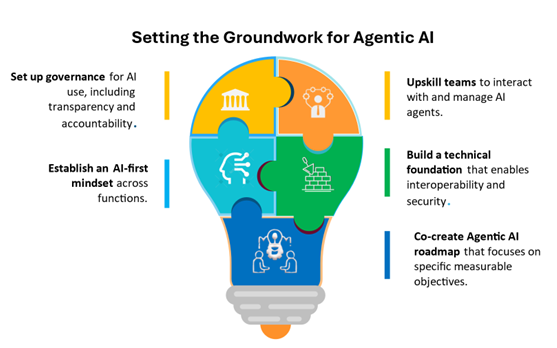Luna Bora, Senior Director, MResult
At the turn of the millennium, Digital Transformation was an aspiration. I recall being part of a high stakes project for a large financial institution. We had just implemented a rule-based automation system to streamline their annual reporting process. It was a major milestone for the organization that brought consistency, speed, and a new level of process control. The logic was clear: if “A” happened, then “B” followed. It didn’t improvise or second-guess; it did exactly what it was designed to do.
At the time, that predictability was its greatest strength.
The simple logic went through cycles of evolution adding new dynamics to the static workflows. In the past few years Gen AI brought in a new level of intelligent reasoning. Complex codes became simple natural language prompts. Generating content at scale, summarizing reams of documents, and even conversation with machines in human-like ways became mainstream. The systems could react with just the right response with near precision. The next logical step in this evolution was to add agency and initiative to the systems, giving autonomy to automated processes. Simply put, making the algorithms decide the next best action and execute them without human intervention.
This is precisely what Agentic AI does. It doesn’t just do assigned tasks, it steps up to be the new digital colleague. Let’s explore how.
Meet Your New Teammate: Agentic AI
You have a new colleague, a mature, responsible, intelligent and diligent co-worker. Earlier you had responsive systems. Now you have more than a responsive assistant but a trusted partner who understands the task, decides how best to execute it, collaborates seamlessly, and learns to improve over time. In an enterprise context an agentic system can assess, act, adapt, and collaborate to complete given tasks autonomously.
The Defining Features of Agentic AI:
- Task Autonomy: It can complete end-to-end processes once assigned.
- Tool Use: It can interact with databases, APIs, or even other agents.
- Self-reflection: It learns from outcomes and fine-tunes its approach.
A Closer Look Under the Hood
At its core, an agentic system begins with a clearly defined objective. This could be something like identifying inconsistencies in data quality, resolving customer queries, or performing system health checks. The agent receives this task via a prompt or trigger.
Next, the agent consults a set of instructions or goals. This is somewhat like a decision tree, but far more dynamic. It combines these with access to tools: databases, APIs, applications, and even third-party platforms. Using APIs or toolkits like LangChain or OpenAI’s function-calling capabilities, the agent executes tasks just as a human switching between tools to get the work done.
Agentic AI brings in adaptive reasoning. It has a feedback loop. Once an action is taken, the agent reviews the outcome, reflects on whether it was successful, and either adjusts the strategy or logs learnings for future iterations. This self-evaluation layer is what begins to mimic human intuition and maturity in decision-making.
In more advanced setups, multiple agents can collaborate. For instance, one agent retrieves relevant data, another analyzes it, while a third takes action based on combined insights. But that comes much later in the maturity cycle.

Adopting Agentic AI, the Starting Point
Given its capabilities that deliver almost 30-40% cost savings and up to 90% efficiency gains, the temptation can be to jump into broader areas of business operations. However, I always recommend beginning with low-risk, high-impact functions. Customer support is a great candidate. Imagine an agent that reads logs, identifies issues, and executes a fix—all without human intervention. Or another that handles a bulk of incoming queries, escalating only the most complex to a live agent.
One more interesting use case is managing backend operations like reading logs, executing database tasks, or initiating corrective actions based on predefined criteria. These agent-led processes demonstrate value quickly and build trust within the organization, setting the stage for larger initiatives. However, there is something more important that organizations must focus on before they put their plan into action – an adaptive mindset.
The AI Mindset: A Cultural Shift, Not Just a Technological One
One of the most important yet often overlooked elements of adopting Agentic AI is cultivating the right mindset across the organization. Implementing AI isn’t just about plugging in new tools, it requires an intentional shift in how work, responsibility, and value creation are viewed.
An AI or automation mindset encourages teams to embrace intelligent automation as a collaborator, not a threat. This cultural readiness builds the foundation for the agentic architecture to deliver sustained value.
Construct of AI First Mindset
- Trust in AI-generated outcomes.
- Experimentation and iteration before perfection
- Adaptability and adoption of the new
- Consistent and continuous reinforcement

In our ways of working this cultural orientation holds great significance. Going beyond complex workflow implementations, we help organizations develop this mindset by embedding AI training into upskilling programs, establishing cross-functional governance teams, and positioning AI agents as teammates, not tools.
Bringing Agentic AI into Action: A Pursuit for Co-Creation
A common question I hear from CXOs is: Should we build this ourselves?
It’s a fair question, and one I approach pragmatically. While some advanced enterprises may have the resources, they are still quite a few steps away from the maturity of frameworks, AI governance models, or the experience necessary to make Agentic AI work at scale.
That’s the bridge we build. At MResult, we bring field-tested frameworks and an outside-in view, informed by our work across sectors. But more importantly, we collaborate and craft just the right strategies that fit each unique use case. Agentic AI isn’t an off-the-shelf solution. It needs to be co-created. This co-innovation must happen in the context of your business, your systems, and your readiness.

Time To Roll Up the (Digital) Sleeves and Get Down To Work
Gartner predicts that by 2029, Agentic AI will autonomously resolve 80% of common customer service issues without human intervention. A recent report by UI path suggests that almost 90% CXOs are looking forward to bringing in Agentic AI in their everyday business and 37% have already begun working towards it. The time is right to finally stop giving machines instructions and start giving them intentions and agency. If you’re at the starting line or even at the contemplation stage, don’t wait for the perfect plan. Start with the right partners, the right use cases, and a mindset that welcomes change. What does that look like? More on it coming up shortly in the next part of this series.

